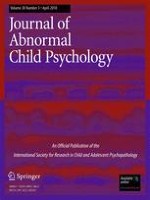01-04-2010
Psychopathic Traits in Youth: Is There Evidence for Primary and Secondary Subtypes?
Gepubliceerd in: Research on Child and Adolescent Psychopathology | Uitgave 3/2010
Log in om toegang te krijgenAbstract
The current study employed model-based cluster analysis in a sample of male adolescent offenders (n = 94) to examine subtypes based on psychopathic traits and anxiety. Using the Psychopathy Checklist: Youth Version (PCL:YV; Forth et al. 2003) and the self-report Antisocial Process Screening Device (APSD; Caputo et al. 1999), analyses identified three clusters in males that varied in the severity of psychopathic traits (low, moderate, and high) and anxiety. The high psychopathic group exhibited more negative personality traits and was judged to be at greater risk for dangerousness whereas the low psychopathic group exhibited more positive personality traits and was judged to be at lower risk for dangerousness. Implications regarding potential developmental differences between adolescent and adult psychopathy, as well as treatment considerations are discussed.
